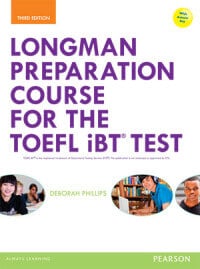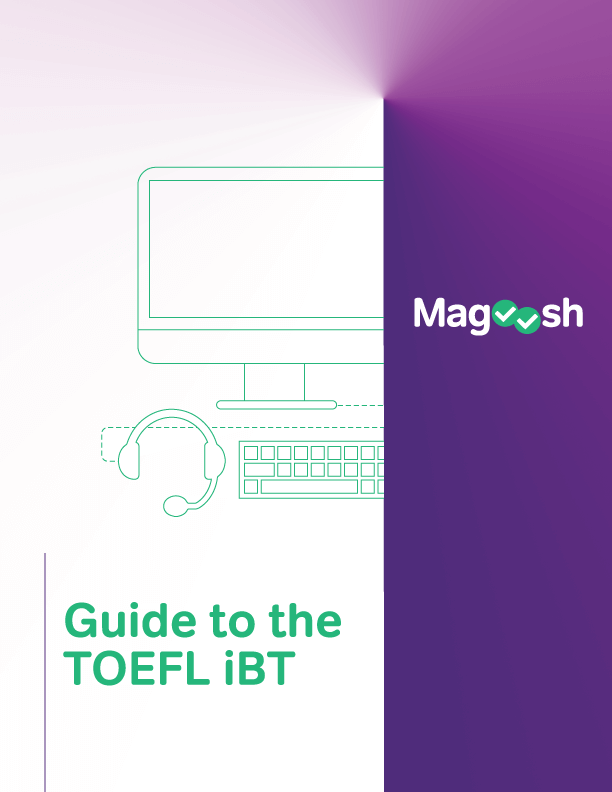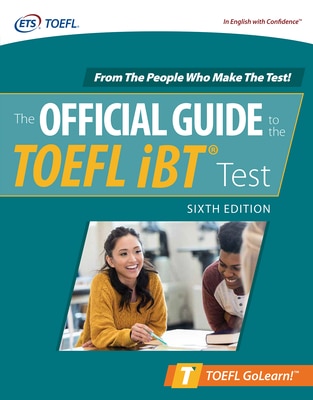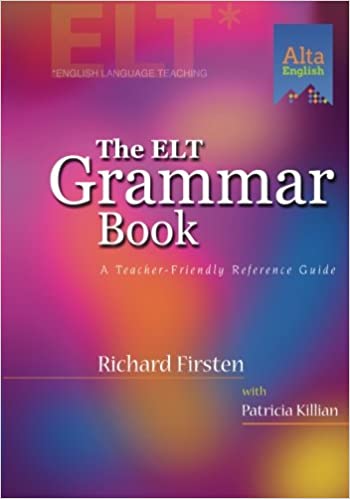(NOTE: The TOEFL books that Magoosh reviews and recommends reflect the older, pre-August 2019 version of the test. As of this writing, there are no TOEFL prep books that reflect the newest version of the test. Fortunately, older-format books are still very useful in prepping for the current TOEFL. For details on this, see Magoosh’s tutorial on using older prep for the 2019 TOEFL.)
 Over the last year and a half, I’ve reviewed almost all of the major TOEFL books, and today I am going to write about one that many students have asked about: Longman Preparation. This year, Pearson (the publisher) released a new version of their popular TOEFL book, so if the cover pictured here looks different from the book you know, it’s because they are from different years. But the content is almost all the same, so this review works for old editions, too.
Over the last year and a half, I’ve reviewed almost all of the major TOEFL books, and today I am going to write about one that many students have asked about: Longman Preparation. This year, Pearson (the publisher) released a new version of their popular TOEFL book, so if the cover pictured here looks different from the book you know, it’s because they are from different years. But the content is almost all the same, so this review works for old editions, too.
Basically, Longman is very similar in style and size to The Complete Guide to the TOEFL Test. The most notable difference is that the material in Longman Preparation is easier, and doesn’t match the real TOEFL as well as the Complete Guide does. And since they’re a similar price, I’d recommend the Complete Guide above Longman’s book.
Report Card:
Authenticity of practice material: C
Amount of practice material: A+
Quality of explanations: B-
Skill building material: B+
Test strategy and advice: A-
TOEFL Practice Material
Longman Preparation has a lot of material. Each chapter breaks up the individual question types, such as vocabulary questions in the reading or task four in the speaking, and gives many examples of each. As the book goes through those individual question types, it gives advice for each question and provides many test-like exercises. For example, in the chapter on listening questions that ask about the speaker’s attitude, Longman provides a total of eight recordings, starting short and then extending to longer recordings with more questions, slowly adding in other question types that were explained in earlier chapters. Eight recordings is a lot for just one question type, and that’s a good thing!
That question-by-question section is most of the book, but after that, there are eight “mini-tests” and two full-length tests. All of this adds up to plenty of material, but there’s actually even more: the book comes with access to a website that has almost the same amount of material again, all different from what is in the book (but in a similar format).
But quantity is less important than quality, and this is why I recommend other books above this book. The core problem is that the passages are too easy. The texts, for one, are often about topics which students will already be familiar with. The real TOEFL tries to include topics which no test-taker knows about. But in Longman, you will read about topics like these:
- Post-It Notes
- Smartphones
- Pollution
- Tornadoes
- Card Games
- Popcorn
Compare those to some real TOEFL topics:
- Sauropod Skeletal Systems
- The Innovations of Eli Terry
- The Rise of Teotihuacán
Even if the information in the texts may be new for you, because you probably don’t know the detailed history of the Post-It Note company, the simple fact that these topics are not as academic as the real TOEFL means they are easier to read and stay interested in.
This is even more true in the listening. The speakers make simple statements often, and repeat themselves too much. For example, here’s an excerpt from a lecture:
Professor: Now, Nick, just how big is the Great Salt Lake?
Student: Uhh, the present Salt Lake is much bigger than Lake Bonneville was.
Professor: Are you sure? Do you wanna try again?
Student: Oh, did I get it backward? What did I say? I mean… what I meant was that the Great Salt Lake is much smaller than Lake Bonneville. Lake Bonneville was much larger than the Great Salt Lake is today.
Professor: You got it this time. The Great Salt Lake is much smaller than Lake Bonneville—less than 10% of the size of Lake Bonneville, in fact.
Notice how they repeat the correct information a few times in that short conversation. And this excerpt happens after almost a full minute of the class already talking about how Lake Bonneville was bigger. A fact like this on the real TOEFL would be said very quickly, in just a line or two, or it would provide more detail in more complicated language. Simply saying “bigger” and “smaller” is too simple. What’s more, a mistake like the student’s error above would be much less obvious. For comparison, look at a similar example forma real official TOEFL Listening track. You can find this example in the first three lines of dialogue on the transcript from page 32 of TOEFL Quick Prep Volume 3.
In that part of the TOEFL Quick Prep V3 PDF, there is a small mistake (the student seems confused about the difference between ultrasound and echolocation), but they don’t spend a lot of time clarifying it. The topic moves quickly on. Soon, the professor is talking about how bats use echolocation, and more details come in. They don’t simply repeat the same detail, as in Longman’s passage.
Now, let’s consider the questions that come after the reading and listening. These are actually well written, mostly, but there are some with problems. Sometimes, the vocabulary questions have alternate meanings of the vocabulary word in the question. That forces you to look back at the text, even if you already know the word. The real TOEFL almost never includes answer choices like that: you can answer the questions correctly if you know the word, without looking at the text.
There are also some inference questions that infer too much, making extreme statements that are “correct” but would not be correct on a real TOEFL. The questions which are good are very good, but these few questions with problems lower the total quality of the book. In one example, there is a passage about sleep and dreaming. The passage says that the animals discussed in the lecture are only a fraction of the total number of animals that dream. In other words, there are many other animals that also dream. The “correct” answer to the inference question about this says that most animals dream. That is a completely different statement. “Many” and “most” are not the same. A father with five children has “many children.” He is not the father of “most children.” That would be a very busy father.
Skill Practice, Test Strategy, and Advice
The skill-building exercises in Longman are not very obvious. They are mixed in with test-like practice, so it’s hard to tell the difference. However, there is other, more focused skill building in the online material. Skills like note-taking, vocabulary, combining sentences, pronunciation, and others are addressed, but in neither the book nor the website are they the focus. In general, in the book those supporting skills are mentioned a couple of times, but there are few exercises to practice them individually. Online, there are more focused exercises, which really help—especially in grammar and vocabulary. But some skills should get more attention, especially note-taking. There is some good note-taking advice at the beginning of the book, but then most samples of notes are unrealistic, and there is very little continued guidance on how to take notes. The book just says “here is a recording; take notes.” Well, it doesn’t use those exact same words, but that’s the general feeling.
Test strategy is also subtle, but it is all there, and it is generally good strategy. It may be hard to actually see the good advice, because it is sometimes within large pieces of text, but if you read all of this book and pay attention to what it says, you will get most of the best ways to answer TOEFL questions. It would be better if each smaller skill or piece of advice had its own exercise, but there is little missing from this book—it’s just a bit boring or hard to find.
Explanations
Although there are very few explanations in the book, you receive access to an answer sheet online. That sheet has the reasons why each answer is correct and explains many of the incorrect answers. As is usually true of explanation sections, it’s not very thorough, but it’s enough for most students.
The most notable problem with the explanations is that there are no scripts for most of the recordings. Students who want to read while they listen to better understand lectures and conversations can’t do so.
Besides that, the speaking response samples are mostly just in text form. There are a few mp3s of sample responses, but most of the questions in the book don’t offer samples that you can listen to, only read.
The Final Word
Longman TOEFL is expensive—the most expensive book I have reviewed yet. But it’s not the best. It gives a ton of material, but the quality isn’t high enough. If you are interested in the large amount of material, try the Complete Guide instead. That book has both better material and better skill-building exercises. Longman is one of the top five TOEFL books I have seen, but I still recommend other books first.
And if you’d rather study online with lesson videos and practice questions (like the real TOEFL iBT!), be sure to check out Magoosh TOEFL, of course. 🙂






Leave a Reply